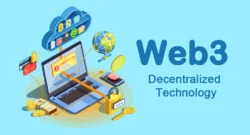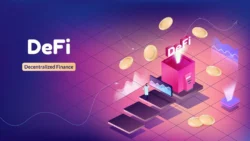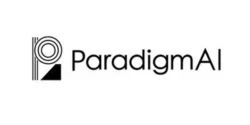Blockchain technology and artificial intelligence (AI) stand as twin pillars of the digital revolution, each reshaping industries in profound ways. Blockchain, originally developed as the backbone of cryptocurrencies, has grown into a robust framework for secure, decentralized data management, ensuring transparency and trust across systems. AI, with its unparalleled ability to analyze complex datasets and automate decision-making, is driving innovation in fields ranging from healthcare to finance. The convergence of these technologies is poised to create a new paradigm, where blockchain’s immutable and transparent ledger complements AI’s analytical prowess, addressing critical challenges like data security, privacy, and trust in an increasingly interconnected world.
This synergy is not merely additive but transformative, enabling applications that were previously unimaginable. By combining blockchain’s ability to provide verifiable, tamper-proof data with AI’s capacity to extract actionable insights, industries can achieve unprecedented levels of efficiency, accountability, and scalability. This article explores the future of blockchain technology in the AI era, exploring how their integration is unlocking novel use cases, overcoming technical and ethical hurdles, and shaping a decentralized, intelligent digital landscape for the decades ahead.
Table of Contents
The Synergy of Blockchain and AI
The integration of blockchain and AI creates a powerful synergy, addressing limitations inherent in each technology while amplifying their strengths. Blockchain provides a secure, decentralized framework for data storage and sharing, while AI excels at analyzing and deriving insights from that data. Together, they enable systems that are transparent, trustworthy, and intelligent. Key areas of synergy include:
1. Data Integrity and Trust
AI systems rely heavily on high-quality, trustworthy data to produce accurate outcomes. Blockchain’s immutable ledger ensures that data used by AI models is tamper-proof and verifiable. By storing data provenance, timestamps, and transaction records on a blockchain, organizations can ensure that AI algorithms operate on authentic datasets, reducing the risk of manipulation or bias.
For example, in healthcare, blockchain can securely store patient records, while AI can analyze these records to predict disease outbreaks or personalize treatments. The combination ensures that sensitive medical data remains secure and that AI-driven insights are based on reliable information.
2. Decentralized AI Models
Traditional AI models are often centralized, controlled by a single entity that manages data and computation. This centralization raises concerns about data privacy, monopolistic control, and single points of failure. Blockchain enables decentralized AI, where models, data, and computations are distributed across a network of nodes.
Decentralized AI marketplaces, such as those powered by blockchain protocols like SingularityNET or Ocean Protocol, allow developers to share AI models and datasets securely. Contributors are rewarded with tokens, fostering a collaborative ecosystem. This approach democratizes access to AI, reduces reliance on tech giants, and enhances privacy by keeping data on-chain or encrypted.
3. Enhanced Security for AI Systems
AI systems are vulnerable to attacks, such as adversarial inputs that manipulate model outputs or data breaches that compromise sensitive information. Blockchain’s cryptographic security can safeguard AI systems by securing model weights, training data, and inference processes. Smart contracts—self-executing agreements on the blockchain—can automate secure interactions between AI systems and external entities, ensuring compliance with predefined rules.
For instance, in autonomous vehicles, blockchain can secure communication between AI-driven cars and infrastructure, preventing unauthorized access or tampering with navigation data.
4. Transparency and Explainability
One of AI’s challenges is its “black box” nature, where decision-making processes are opaque. Blockchain can enhance transparency by recording AI model decisions, training data, and parameters on an immutable ledger. This auditability is critical in industries like finance or legal systems, where accountability is paramount. For example, a blockchain-based AI system for loan approvals could log every decision, allowing regulators to verify fairness and compliance.
Emerging Applications
The convergence of blockchain and AI is unlocking innovative applications across various sectors. Below are some key areas where their integration is poised to make a significant impact by 2030 and beyond:
1. Supply Chain Management
Supply chains are complex networks involving multiple stakeholders, from manufacturers to retailers. Blockchain ensures transparency by tracking goods’ provenance, while AI optimizes logistics, predicts demand, and detects anomalies like fraud or inefficiencies. For instance, IBM’s Food Trust blockchain, combined with AI analytics, enables real-time tracking of food products, ensuring safety and reducing waste.
2. Decentralized Finance (DeFi)
DeFi platforms leverage blockchain to provide financial services without intermediaries. AI enhances these platforms by predicting market trends, assessing credit risk, and automating trading strategies. Blockchain ensures that these AI-driven processes are transparent and secure. For example, AI-powered smart contracts on Ethereum can execute complex financial instruments, such as automated lending, with minimal human intervention.
3. Healthcare
Blockchain secures sensitive patient data, while AI analyzes it to improve diagnostics, drug discovery, and personalized medicine. Projects like MedRec use blockchain to create interoperable health records, enabling AI to access comprehensive datasets while maintaining patient privacy. This combination could lead to breakthroughs in precision medicine and global health monitoring.
4. Content Authenticity and Intellectual Property
The rise of AI-generated content, such as deepfakes, poses challenges to authenticity. Blockchain can timestamp and verify the origin of digital content, while AI can detect manipulated media. Platforms like Verasity use blockchain to protect intellectual property, ensuring creators are fairly compensated and content is authentic.
5. Governance and Voting Systems
Blockchain-based voting systems ensure tamper-proof elections, while AI can analyze voter behavior and detect fraudulent activities. This combination enhances trust in democratic processes, as seen in experimental blockchain voting platforms like Voatz, which use AI to verify voter identities securely.
Challenges and Limitations
Despite its potential, the integration of blockchain and AI faces several challenges:
1. Scalability
Blockchain networks, especially public ones like Ethereum, struggle with scalability, processing only a limited number of transactions per second. AI applications, which often require real-time data processing, may be hindered by these limitations. Layer-2 solutions, such as rollups, and newer blockchains like Solana or Polkadot aim to address this, but widespread adoption is still evolving.
2. Energy Consumption
Both blockchain and AI are computationally intensive. Proof-of-work blockchains, like Bitcoin, consume significant energy, while training large AI models requires substantial computational resources. Sustainable solutions, such as proof-of-stake blockchains and energy-efficient AI algorithms, are critical to mitigating environmental impacts.
3. Regulatory Uncertainty
The regulatory landscape for blockchain and AI is fragmented, with governments grappling to balance innovation and consumer protection. Data privacy laws, such as GDPR, may conflict with blockchain’s transparency, while AI’s ethical implications raise concerns about bias and accountability. Harmonized regulations are needed to foster adoption.
4. Interoperability
Blockchain networks and AI systems often operate in silos, with limited interoperability. Standardizing protocols for data sharing and model integration is essential to realizing the full potential of their convergence.
5. Cost and Accessibility
Implementing blockchain-AI solutions can be expensive, requiring specialized expertise and infrastructure. Small organizations and developing nations may struggle to adopt these technologies, potentially widening the digital divide.
The Road Ahead
By 2030, the integration of blockchain and AI is expected to mature, driven by advancements in both fields. Key trends shaping the future include:
- Interoperable Blockchains: Cross-chain protocols will enable seamless data sharing between blockchain networks, enhancing AI’s ability to access diverse datasets.
- AI-Optimized Blockchains: New blockchains designed specifically for AI workloads, with low latency and high throughput, will emerge.
- Ethical AI Frameworks: Blockchain-based governance models will enforce ethical AI standards, ensuring fairness and transparency.
- Decentralized AI Ecosystems: Peer-to-peer networks will empower individuals and organizations to contribute to and benefit from shared AI resources.
- Quantum Integration: As quantum computing advances, blockchain and AI will need to adapt to quantum-resistant cryptography to maintain security.
Conclusion
The future of blockchain technology in the AI era is bright, with the potential to revolutionize industries by combining trust, transparency, and intelligence. While challenges like scalability, energy consumption, and regulation persist, ongoing innovations are paving the way for a decentralized, AI-driven world. As these technologies continue to evolve, their convergence will unlock unprecedented opportunities, from secure healthcare systems to transparent financial markets. By addressing current limitations and fostering collaboration, blockchain and AI can create a future where technology serves humanity with integrity and efficiency.







